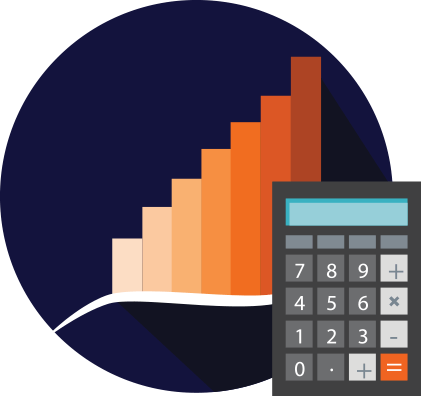You’ve graduated from college. Congrats!
Now it’s time to get out there, get a job and start paying the bills.
One of those bills (once the grace period ends) is your student loans.
But things are tough out there right now. There’s a reason the student loan default rate is on the rise — especially in communities of color.
At some point, you might feel like you can’t pay your student loans. What happens then? Ending up in default can lead to serious problems down the road with your credit and your ability to access other federal benefits.
If you can’t pay your student loans and want to avoid default on your federal loans, understand your options. Here’s what you need to know:
Start with Income-Driven Repayment
One of the best ways to manage your student loan payments and your monthly cash flow is by starting with income-driven repayment programs offered by the Department of Education.
These payment plans can result in a payment that is more manageable for you, including the possibility of your monthly payment being $0.
If you’re struggling with cash flow each month, this can be a viable solution and help you with other financial goals. You end up with an affordable monthly payment that is considered “up-to-date,” so it won’t impact your credit score and put you in danger of default.
You do need to watch out, though. An income-driven plan can lead to paying more interest over the life of your loan, costing you more in the long run. You can have your remaining balance forgiven if you actually remain on income-driven repayment for 20 or 25 years (depending on the plan you’re in). However, that forgiven amount is taxable as income, so it comes with its own problems.
Income-driven repayment should be used as a short-term solution to help you manage your payments while you get on your feet — without falling behind.
Deferment or Forbearance
Another option with these loans is deferment or forbearance.
Many servicers will put you into deferment automatically. However, this isn’t always the best option when you can’t pay your student loans. Deferment and forbearance both come with extra fees, and interest can continue to accrue, depending on the loan.
For many students, it makes more sense to ask about income-driven repayment than to automatically sign up for deferment or forbearance. Carefully consider your options. But know that with deferment or forbearance, you can still avoid default and save your situation to some degree.
Private Student Loans: A Different Picture
The above tactics work mostly with federal student loans. You can’t use income-driven repayment with private student loans. Instead, you need to talk to your private lender about their hardship programs.
Some private student lenders offer their own deferment and forbearance programs that allow you to put off payments. Others also offer programs designed to allow you to set up a temporary payment plan that you can afford. Check with your servicer to learn your options before you end up in default because you can’t pay your student loans.
As with federal loans, some of the options you’re offered will come with extra fees and other costs and you’ll likely continue accruing interest. It’s important to be aware that any solution you use — federal or private — will add to your long-term, overall costs.
Finally, you can refinance your private and federal loans. Once you refinance federal loans, though, you lose federal protections and the ability to take advantage of income-driven repayment. Additionally, you need to meet income and credit requirements to refinance privately. For many students unable to make payments, refinancing isn’t an option.
If You’re Already in Default
If you’re already in default, you’ll need to get out as soon as possible. This can seem like a daunting task when you can’t pay your student loans. If you haven’t consolidated your federal student loans yet, you can do so to help rehabilitate them. Get a Direct consolidation loan and then get on income-driven repayment.
When that’s not an option, you’ll need to make on-time payments and rehabilitate each loan one at a time.
With a private loan, your only option is to speak with your servicer and come up with a payment plan to help you get back on track.
It’s difficult to deal with student loans — especially when you can’t make your payments. But the good news is that you do have options. Talk to your servicer before you miss too many payments to figure out what you can do to reduce the impact on your long-term financial future.

